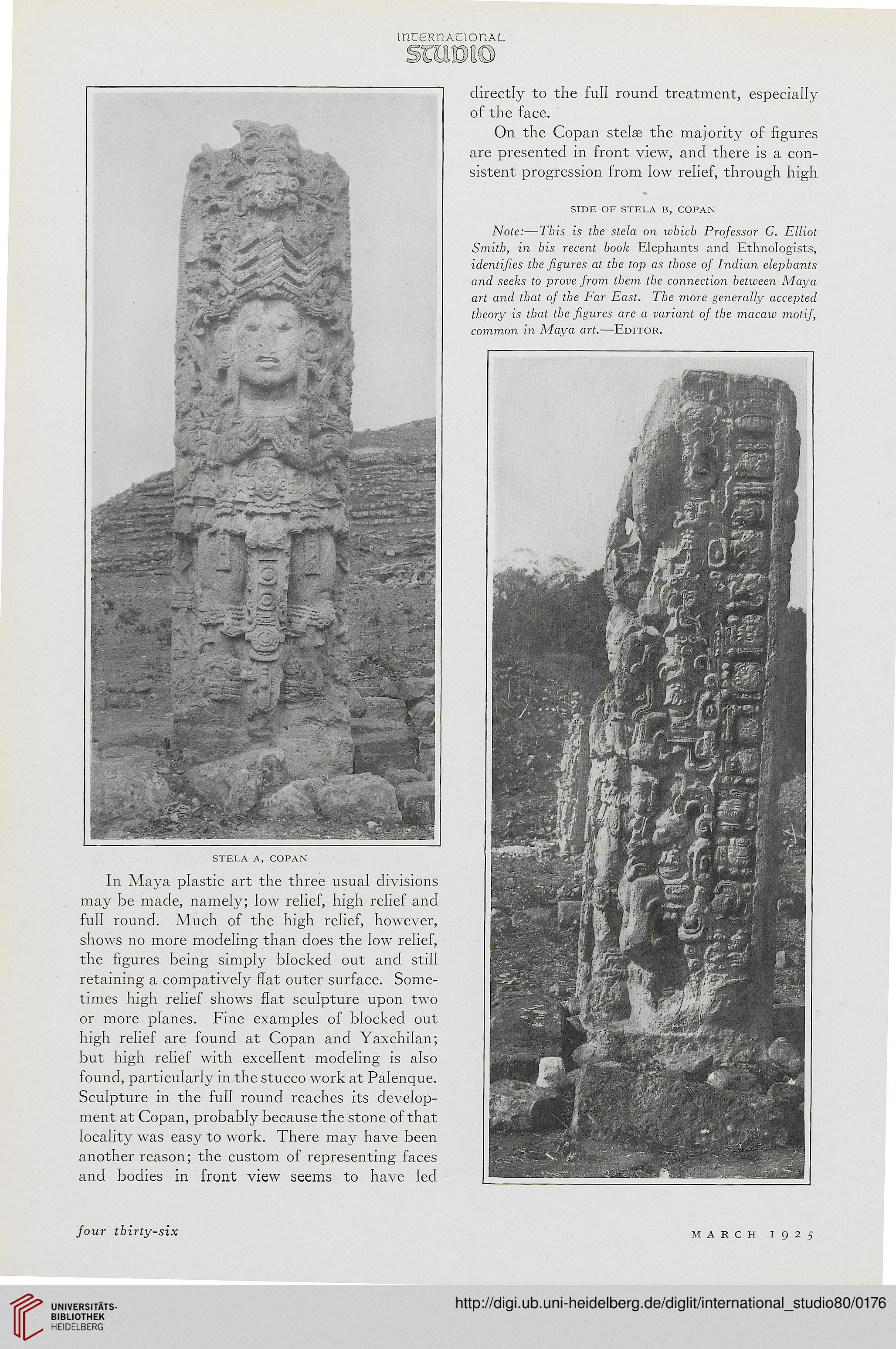inCERDAClOnAL
stela a, copan
In Maya plastic art the three usual divisions
may be made, namely; low relief, high relief and
full round. Much of the high relief, however,
shows no more modeling than does the low relief,
the figures being simply blocked out and still
retaining a compatively flat outer surface. Some-
times high relief shows flat sculpture upon two
or more planes. Fine examples of blocked out
high relief are found at Copan and Yaxchilan;
but high relief with excellent modeling is also
found, particularly in the stucco work at Palenque.
Sculpture in the full round reaches its develop-
ment at Copan, probably because the stone of that
locality was easy to work. There may have been
another reason; the custom of representing faces
and bodies in front view seems to have led
directly to the full round treatment, especially
of the face.
On the Copan stelae the majority of figures
are presented in front view, and there is a con-
sistent progression from low relief, through high
side of stela b, copan
Note:—This is the stela on ivbieh Professor G. Elliot
Smith, in his recent hook Elephants and Ethnologists,
identifies the figures at the top as those of Indian elephants
and seeks to prove jrom them the connection between Maya
art and that of the Far East. The more generally accepted
theory is that the figures are a variant of the macaw motif,
common in Maya art.—Editor.
four thirty-six
MARCH 1925
stela a, copan
In Maya plastic art the three usual divisions
may be made, namely; low relief, high relief and
full round. Much of the high relief, however,
shows no more modeling than does the low relief,
the figures being simply blocked out and still
retaining a compatively flat outer surface. Some-
times high relief shows flat sculpture upon two
or more planes. Fine examples of blocked out
high relief are found at Copan and Yaxchilan;
but high relief with excellent modeling is also
found, particularly in the stucco work at Palenque.
Sculpture in the full round reaches its develop-
ment at Copan, probably because the stone of that
locality was easy to work. There may have been
another reason; the custom of representing faces
and bodies in front view seems to have led
directly to the full round treatment, especially
of the face.
On the Copan stelae the majority of figures
are presented in front view, and there is a con-
sistent progression from low relief, through high
side of stela b, copan
Note:—This is the stela on ivbieh Professor G. Elliot
Smith, in his recent hook Elephants and Ethnologists,
identifies the figures at the top as those of Indian elephants
and seeks to prove jrom them the connection between Maya
art and that of the Far East. The more generally accepted
theory is that the figures are a variant of the macaw motif,
common in Maya art.—Editor.
four thirty-six
MARCH 1925




